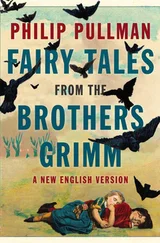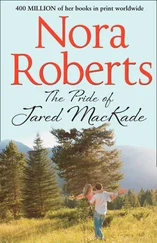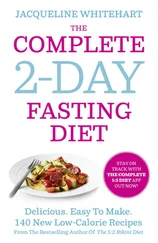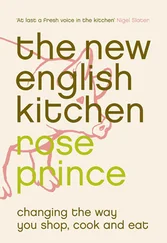What matters is to recognise that these are not cuts that should be eaten every day, even if your means make them affordable. A farmer goes to immense trouble over the years to rear a steer to perfection, yet there is only enough fillet to feed about 20 people from it. A butcher must trim off a good proportion of the fillet once it has been extracted from the carcass, because it is unsaleable with the untidiness of stray pieces of beef and some membrane. This meat is chucked into the mince and sold for pence, not pounds. For every fillet in a beef side there’s an awful lot of much less valuable meat that is a hard job for the butcher to sell. It’s not really acceptable for someone who says they love beef to eat only the fillet or sirloin. Demand for fillet is a demand for a whole animal to be reared and slaughtered and there is – bossy as it sounds – a collective responsibility to find uses for the other cuts. I am not suggesting buying the whole cow, but you can buy beef boxes from some butchers and mail-order services. You can also ask for bones. They are free, and a source of good stock, marrow or even canine happiness. Butchers and meat producers pay to have bones and waste material removed and disposed of.
So, if I haven’t made you feel too guilty …
Roast Rare Aged Beef Sirloin with a Mustard and Watercress Sauce
Now that the Over-Thirty-Month rule has been lifted, it is possible once again to buy beef from steers that have reached their full maturity. So we now have four-year-old beef and it is unbelievably good, both to cook and in its vintage flavour. I buy four-year-old well-hung Galloway beef from Ben Weatherall, of Blackface (see Buying beef). Its texture and the way it cooks so beautifully, barely losing an ounce as it roasts, is confirmation that growing an animal slowly is the best approach to rearing beef.
When you buy your sirloin, ask the butcher for the ‘cradle’ of detached ribs for it to sit in as it roasts; they can be used to make stock for other dishes.
Serves 6
1.25kg/2¾lb whole piece of rolled sirloin
fennel seeds
6 small sprigs of thyme
sea salt and freshly ground black pepper
For the mustard and watercress sauce:
leaves from 2 bunches of watercress
1 tablespoon English mustard powder
2 tablespoons white wine vinegar
4 tablespoons chicken stock
1 shallot, roughly chopped
1 garlic clove, roughly chopped
200ml/7fl oz olive oil
lemon juice
Allow the beef to come to room temperature before you begin roasting. Preheat the oven to 240°C/475°F/Gas Mark 9.
Season the beef all over and put it in a roasting tin. Scatter the fennel seeds and thyme on top. Put in the oven and roast for 10 minutes, then turn the heat down to 175°C/350°F/Gas Mark 4 and continue roasting for about 30 minutes. Remove from the oven and test for doneness. To do this, insert a skewer into the thickest part of the meat, leave it there for 1 minute, then take it out and test the temperature of the skewer by touching it with your finger where it would have been in contact with the centre of the sirloin.
For rare beef, it should be above blood temperature (about 50°C/125°F if you use a meat thermometer) – this is not a dish to eat well done. If the meat is cooked, remove from the oven and leave for a good 20 minutes to rest. If not, return it to the oven for 10 minutes and then test again.
Meanwhile put the watercress, mustard, vinegar, stock, shallot, garlic and oil in a liquidiser and blend until smooth. Taste and add salt if necessary. Finish with a squeeze of lemon juice and stir well.
Carve the beef in thick slices and serve with the sauce in a bowl on the table so everyone can help themselves. Serve mustard, too – and have a big leafy salad afterwards.
|
Kitchen note |
| The same sauce can be eaten with roast whole fillet or a rolled forerib roast. |
Raw Beef with Horseradish, Sorrel and Rye Bread
Two years ago I travelled to Copenhagen on an assignment. The story was a young chef whose restaurant, Noma, was attracting much attention. Rene Redzepi has since won awards for his curious cooking, which uses only Nordic raw materials on a strictly seasonal basis. He made a ‘tartare’ similar to this one, and advised that we should eat it with our fingers. I recommend it (if occasion allows); somehow the absence of a cold fork is just right. It is a nice primitive way to eat a dish that feels northern European down to its boots, yet would not be out of place in Venice.
Redzepi made this with the fillet of a Musk Ox, a native Greenland breed. With none to hand, seek out any of the pure native British breeds: Angus, Hereford, Red Poll, Galloway, Devon, Highland, Welsh Black, White Park, Dexter and so on. Use only beef that has been hung for a minimum of three weeks, preferably four.
Serves 4
450g/1lb prime fillet beef
4 small pinches of sea salt
4 thin slices of rye bread, each slice trimmed of the crust and cut into 4 squares (pumpernickel is the closest alternative to Danish rye bread)
4 tablespoons olive oil
2 tablespoons grated fresh horseradish
a handful of sorrel leaves – or sorrel sprouts (see Kitchen Note below)
2 shallots, very thinly sliced
1 tablespoon juniper berries
1 teaspoon coriander seeds
1 teaspoon caraway seeds
For the tarragon sauce:
6 sprigs of tarragon
1 tablespoon white wine vinegar
1 tablespoon chicken stockor water
½ shallot
½ garlic clove
150ml/¼ pint olive oil
lemon juice
sea salt
Begin with the tarragon sauce. Put the tarragon, vinegar, stock or water, shallot, garlic and oil in a liquidiser and blend to a smooth cream. Season to taste with salt and a few drops of lemon juice, then refrigerate.
Using a very sharp knife, ‘scrape’ the meat into fine strips along the grain, parting the grain. Divide it between 4 serving plates. Sprinkle each portion with a small pinch of salt. Fry the rye bread lightly in the oil, then scatter it randomly over the beef, followed by the horseradish. Finish off with the sorrel and sliced shallots.
Heat the spices in a deep frying pan until they begin to brown, then grind to a fine powder using a mortar and pestle or a redundant coffee bean grinder. Put a large pinch of the spice mixture on the side of each plate. Serve with little bowls of the sauce to one side of each plate, eating the tartare with your fingers by taking a pinch of the raw meat and dipping it first in the sauce, then in the spice.
 |
Kitchen note |
| Sorrel takes just 2 or 3 weeks to grow in a bed or pot but is sometimes available from specialist greengrocers. Alternatively, try a peppery leaf such as rocket or even cress, instead of the lemon-flavoured sorrel. |
Beef leftovers
In 2006 a stunning statistic revealed that the average person throws over £400 worth of food away each year, and I’ll bet a proportion of that will be leftover meat, carcass bones and fat. If, after reading the introduction to the beef section, you are convinced that spending more on naturally reared beef is essential, then absorb the extra spend by making use of the leftovers. This food is a bonus, and a strong point in favour of the argument that good eating is more a question of knowing what to do with food than one related to money.
Cold meat
Beef with Horseradish Sauce on Crisp Bread
Making sandwiches with cold beef seems dull when you could brush a piece of bread on both sides with olive oil, then toast it in a pan, turning once. Meanwhile, make a sauce for 2 people by mixing together 2 teaspoons of mustard (English, French, whichever is your favourite), 1 tablespoon of grated horseradish or a teaspoon of ‘Gentleman’s Relish’, a chopped shallot, about 3 tablespoons of double cream or crème frâiche, ½ teaspoon of cider vinegar and some salt. Place a slice of cold roast beef rolled up with 1 tablespoon of the sauce on the crisp bread, and throw over some chopped herbs or cress – or other salad leaves.
Читать дальше













